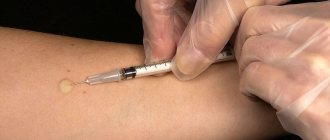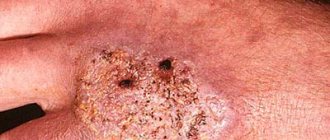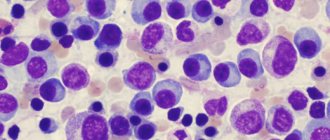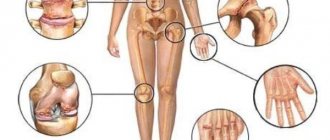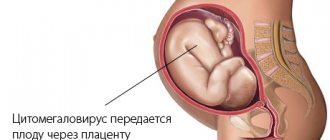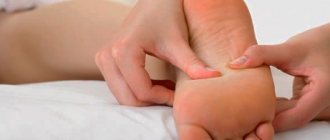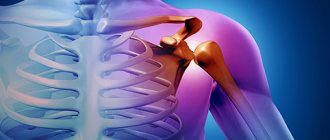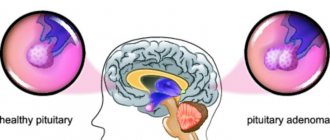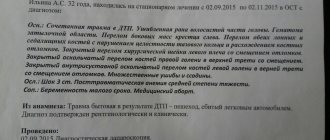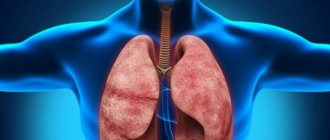The problem of tuberculosis is relevant for many countries of the modern world. It is no coincidence that doctors have to recognize the epidemic of such a disease and direct significant efforts to fight it. This mainly concerns the most common pulmonary tuberculosis. But the pathological process often affects other organs and systems, in particular the musculoskeletal system.
Tuberculosis of bones and joints occupies a leading position among all cases of extrapulmonary localization of the disease. It accounts for at least 40% of the morbidity structure. In this case, most often one has to deal with damage to the spinal column, knee and hip joints. In order for each person to navigate the problem, it is worth taking a closer look at the main points in the development of the disease and its treatment.
Causes
Factors contributing to the development of pathology:
- drinking large quantities of alcoholic beverages;
- constant physical overload;
- malnutrition;
- frequent injuries of the musculoskeletal system;
- unfavorable living conditions.
Bone tuberculosis can develop both initially and during the generalization of the infectious process in secondary tuberculosis. MTB is transmitted from a sick organism to a healthy one by airborne droplets. Next, mycobacteria are transferred through the bloodstream to bone structures. A specificity gradually begins to form around them. granulomas, which, as the disease progresses, can merge and form one large conglomerate. In its center there will be a zone of cheesy necrosis. The larger the volume of affected tissue, the brighter the symptoms of tuberculosis of bones and joints.
Many are sure that if Mycobacterium tuberculosis has already penetrated the human body, then he will definitely get tuberculosis. Actually this is not true. If a person has a healthy immune system, then Koch’s bacilli are not capable of causing him any harm, since the body itself prevents the progression of pathology. Often tuberculosis of the spine or other bones and joints can resolve on its own without having any effect on the human body. But if the immune system is weakened or the person has recently suffered a serious illness, then the rods can provoke the progression of tuberculosis in any organ, spine or joints.
Treatment
Once the diagnosis of tuberculosis has been established, active treatment of the disease must begin. This process is quite lengthy and can take from six months to 1.5–3 years. The main thing is to comprehensively influence the pathological focus, taking into account not only local changes, but also general disorders in the patient’s body.
General recommendations
An important component of treatment is the normalization of a person’s lifestyle. This includes good nutrition, adequate exercise, and the elimination of other risk factors responsible for the development of the disease. When considering dietary recommendations, you should focus on the following:
- Consumption of protein foods of animal origin (meat, milk, fish, eggs).
- The presence of a sufficient amount of fresh fruits, vegetables, and herbs in the diet.
- The need for regular nutrition.
- Quitting drinking alcohol and smoking.
Patients should spend more time in the fresh air with moderate insolation, and, if possible, spend time walking. Swimming has a beneficial effect on the musculoskeletal system. But during an exacerbation, only bed rest is indicated.
General measures have a nonspecific positive effect on the patient’s body, stimulating its own compensatory reactions.
Drug therapy
The basis of treatment for tuberculosis, including osteoarticular tuberculosis, is drug therapy. It is aimed at destroying, inhibiting the growth and development of Koch's bacillus, which will lead to the elimination of symptoms and the gradual restoration of lost functions. The plan of therapeutic measures necessarily includes medications, the action of which is aimed at strengthening the protective properties of the body. Thus, the following medications are used:
- Antituberculosis (isoniazid, rifampicin, ethambutol, pyrazinamide, levofloxacin).
- Immunomodulators (Leukinterferon, Polyoxidonium, Glutoxim).
- Detoxification (Hemodez, Reosorbilact).
- Vitamins (ascorbic acid, pyridoxine).
At least two anti-tuberculosis drugs are used for therapy, but most often 4–5 drugs are used. The treatment regimen depends on the form of tuberculosis, the resistance of mycobacteria, and associated complications. To improve patient adherence to therapy, combination medications have been created, for example, Mairin-P.
Any medications are prescribed by a doctor. Anti-tuberculosis drugs are not available for self-administration.
Physiotherapy
Some benefit can be gained from physical treatments. They are prescribed in the phase of fading exacerbation, when there is no pronounced purulent process. The procedures help reduce the inflammatory reaction of tissues, muscle spasms, improve blood flow and metabolic processes in the affected area. The following methods are used for this:
- Phonophoresis.
- Wave treatment.
- Laser therapy.
- Magnetotherapy.
- Water and mud therapy.
Which of them are indicated for a particular patient will be determined by the physiotherapist after taking into account all the characteristics of the disease. With concomitant pathology, there are certain restrictions for some procedures.
Physiotherapy
After eliminating the acute signs of the disease, tuberculosis of bones and joints requires activation of the motor mode. This consists not only of regular walks, but also of performing special physical therapy exercises. Do not underestimate the importance of such therapy, since it is it that allows you to restore the function of the musculoskeletal system. Thanks to gymnastics, contractures are eliminated, ankylosis is reduced and the range of motion in the affected joints is improved.
Exercises must be performed regularly and do not forget to gradually expand their complex, moving from easy exercises to more complex ones.
Operation
Tuberculous lesions of bones and joints often require surgical intervention, which is performed against the background of drug correction. The volume and type of operation is determined by the nature of the pathological process and its prevalence. But it is always necessary to remove necrotic tissues, fistulas, and wash abscesses with antiseptics. Gross anatomical defects that interfere with the normal functioning of the osteoarticular system are also eliminated. After the operation, step-by-step rehabilitation is required, including physiotherapy, therapeutic exercises and massage.
If tuberculosis of the musculoskeletal system is suspected, it is necessary to be examined by a specialist as soon as possible in order to begin treatment immediately. In most cases, the disease requires long-term therapy, but only this will avoid adverse complications and disability.
It can be useful:
- Rheumatism of the joints and heart: symptoms and treatment
- Why does my back hurt in the shoulder blade area?
- Pinched sciatic nerve in pregnant women
- What is joint arthropathy?
- Causes of shingles back pain
Forms of pathology
There are several types of bone tuberculosis:
- Tuberculosis drives. It is this form of pathology that accounts for up to 20% of all cases of tuberculosis of bones and joints;
- spinal tuberculosis;
- omartritis;
- Tuberculous coxitis. This type of disease primarily affects children. It is dangerous because without timely treatment it can lead to deformation and dislocation of this joint;
- tuberculosis of the ankle joints and feet. The disease proceeds with the formation of long-term non-healing cavities. If it is not diagnosed in time and specific treatment is not carried out, it can progress and lead to joint immobility. This occurs because the articular surfaces fuse together;
- tuberculosis of the wrist joints. This type is rare. Its characteristic feature is bilateral damage (two joints are affected at once). The disease rarely occurs on its own; most often it is combined with pathologies of other joints;
- fawn This form of the disease predominantly affects young people;
- tuberculosis of sections of long bones. This form is extremely rare.
Signs of tuberculous coxitis in a child
Symptoms
Clinical manifestations of osteoarticular tuberculosis are characterized by a number of general functional disorders caused by tuberculosis intoxication and local symptoms associated with damage to the skeletal bones.
In the initial stages of the disease, patients present nonspecific complaints:
- general weakness;
- decreased performance;
- poor appetite;
- periodic increase in body temperature;
- weight loss, etc.
If the spine is damaged, heaviness and back pain may appear without clear localization, and slight stiffness when moving (especially at the end of the day). Persons with joint tuberculosis note a feeling of limb instability. Later, they begin to experience pain during exercise, which goes away with rest. Against this background, patients may experience changes in posture and gait disturbances.
After the infectious process leaves the primary focus, both general and local symptoms intensify. Moreover, the nature of the latter depends on the location of the pathologically altered tissue area:
- If it is located in the cervical spine, then the patient is bothered by pain and discomfort in the back of the head, neck, and upper extremities.
- When the upper thoracic vertebrae are affected, a paroxysmal cough often occurs.
- Patients with involvement of the lower thoracic vertebrae develop pain in the abdomen and lower back.
- Tuberculosis of the lumbosacral spinal column is characterized by radiculitis with clinical symptoms of sciatic nerve entrapment.
- With tuberculous damage to the joints, pain increases during movements, swelling and lameness may appear. The range of movements in them is limited and atrophy of nearby muscles is observed. In severe cases, slight shortening of the diseased limb and its incorrect installation may be detected.
In some cases, spondylitis of a tuberculous nature occurs with complications:
- chest deformation (kyphosis, scoliosis);
- edema abscesses (detected by radiography);
- fistulas;
- paralysis and other neurological disorders.
During the period of extinction of the activity of the tuberculosis process, inflammation subsides. This leads to the disappearance of the associated unpleasant symptoms, but the anatomical and functional changes that occur during the disease persist for life. Often, after a period of remission, relapses of tuberculosis develop, usually having a severe course.
The course of bone tuberculosis in young children and the elderly has some features:
- In childhood, the tuberculosis process has a severe course. It is characterized by an acute onset with high fever, deterioration of general condition and rapid progression of bone destruction.
- In elderly patients, tuberculosis spreads quickly, but is difficult to diagnose due to the presence of age-related involutive changes in the skeleton and a large number of concomitant diseases.
Symptoms
Tuberculosis of joints and bones mainly affects young children. The disease at an early stage of development is very difficult to recognize, since at this time it does not have any pronounced symptoms. Many people are sure that the symptoms of bone tuberculosis begin to appear in an adult or child after a fall or a strong blow. In fact, this statement is not true. A blow, even a very strong one, cannot provoke the progression of tuberculosis.
If you carefully monitor a child or adult, it is possible to identify the disease at an early stage of its development. It is very important to pay attention to the patient’s behavior. If this is a child, then he will refuse to play outdoor games, will be irritable, lethargic. These are the first signs that not everything is in order in the baby’s body. In addition, the child may begin to limp, stoop, raise his shoulders up, or have club feet.
In an adult, the early stage of development of the pathology is very weakly expressed. It usually manifests itself with symptoms that a person regards as normal fatigue:
- feeling of heaviness in the spine;
- fast fatiguability;
- back pain.
Symptoms of bone tuberculosis become most pronounced in phase 2 of the progression of the disease. Pain in the joints and spine intensifies. They are similar in nature to pain due to intercostal neuralgia or radiculitis. There is a limitation of mobility, the back muscles become stiff and lose their elasticity.
In the area of the affected joint or spine, swelling, tissue atrophy, and accumulation of exudate are noted. The limbs shorten, the muscles become thinner and ulcers form.
Symptoms of bone tuberculosis
Each phase of the development of the disease is accompanied by certain symptoms. As it progresses, the clinical picture becomes more pronounced. Symptoms may differ between adults and children. Infection with mycobacteria in a child can mainly be detected by behavior.
Most adults regard incipient tuberculosis as ordinary overwork.
Articles on the topic
- Skin tuberculosis - first signs, types and manifestations of the disease, methods of treatment
- Tuberculous meningitis in children - signs, diagnosis, therapy and complications
- The causative agent of tuberculosis in humans
Initial manifestations
At an early stage, tuberculosis of bones and joints does not have specific symptoms. A person may be bothered by signs that are often attributed to fatigue. These include decreased performance, lethargy, and irritability. The first symptoms also include:
- low-grade fever;
- increased drowsiness;
- weakness;
- partial lack of appetite;
- apathetic state;
- dull aching muscle pain in the evening or after physical activity;
- painful discomfort in the back when bending or standing, which disappears after rest.
Signs of progression
As tuberculosis moves to the next stage, symptoms intensify. The patient experiences pain that is reminiscent of intercostal neuralgia or radiculitis. During the progression stage, signs of general intoxication may appear. There is a decrease in the elasticity of the back muscles and joint mobility. The main signs at this stage:
- clubfoot;
- lameness;
- raised shoulders;
- pronounced weight loss;
- poor posture;
- temperature 39–40 degrees;
- unbearable pain syndrome;
- altered gait;
- swelling of the affected area;
- increase in skin temperature at the site of inflammation;
- the formation of fistula tracts with the release of gray pus;
- back muscle atrophy;
- deformation and shortening of the affected limb.
Features of symptoms in children
When bones are affected by Koch's wand, children become less active and mobile. They are characterized by absent-mindedness and refusal of various games. From the outside, you can notice that the child tries not to step on the sore leg, takes care of it, and sometimes after a long walk the limb may drag. The baby can only use one hand during play if the other is affected. Other characteristic features:
- the affected limb begins to lose weight;
- the child has a crooked pelvis;
- painful lameness appears, because of which the child is afraid to step on the sore leg;
- slouch;
- lifting the shoulders up.
Diagnostics
Tuberculosis of bones and joints is very difficult to diagnose, especially in the early stages of its development. Diagnostics includes a combination of the following studies:
- laboratory;
- clinical;
- radiographic.
The diagnostic plan in medical institutions is as follows:
- taking anamnesis;
- conducting general clinical studies;
- X-ray examination, which makes it possible to confirm the diagnosis;
- tuberculin diagnostics;
- microbiological examination of material taken during biopsy;
- rheography;
- thermography.
Tuberculosis of bones
Bone tuberculosis is an infectious disease caused by the activity of mycobacterium tuberculosis, better known as Koch bacilli. The infection affects bones containing spongy substance, abundantly supplied with a vascular network, causing the formation of abscesses in the joint, long-term non-healing fistulas, impaired mobility, shortening of the limb or complete destruction of the joint. Tuberculosis of the spine leads to the formation of a hump, curvature of the back, and in severe cases, paralysis of the limbs.
There are three phases during the course of the disease:
- primary osteitis (pre-arthritic phase);
- secondary arthritis (arthritic phase), including stages - onset, peak, subsidence;
- post-aging phase, which represents the consequences of tuberculous arthritis, its exacerbations, prolonged course and relapses.
There are several forms of osteoarticular tuberculosis:
- Tuberculosis of the knee joints is driving. This form of the disease accounts for about 20 percent of all cases of bone tuberculosis.
- Tuberculosis of the hip joints - coxitis. It most often occurs in children and in advanced cases leads to deformation and pathological dislocation of the hip joint.
- Tuberculosis of the bones of the foot and ankle joints. Accompanied by the presence of long-existing cavities and fistulas. Often leads to joint immobility due to fusion of its surfaces.
- Tuberculosis of the shoulder joints - omartritis. A rather rare form of the disease, characterized by a long course without exudation and purulent effusion.
- Tuberculosis of the wrist joints. Also a rare type of bone tuberculosis, which is characterized by bilateral damage to the bones of the wrist or a combination with pathology of other joints - knees or elbows.
- Tuberculosis of the elbow joints - deer disease. It most often affects young people under 20 years of age. If left untreated, it leads to leaky abscesses and fistulas.
- Tuberculosis of sections of long bones. An extremely rare type of disease that begins in childhood. The main phalanges of the hand and metacarpal bones are most often affected.
Causes and routes of transmission
The source of the disease is the tuberculosis bacillus, which enters the body in various ways. Most often, infection occurs through airborne droplets, for example, after close contact with a tuberculosis patient. When such a person coughs, particles of sputum containing a large number of pathogenic microbes are sprayed. Entering the body through dirty hands or with food, microbes are instantly spread through the bloodstream to all tissues and organs, including joints and bones.
However, the entry of mycobacteria into the body does not always cause tuberculosis. With a healthy and developed immune system, microbes are not capable of causing harm, since the body’s defenses stop the onset of the disease in time. Often, the beginning of the tuberculosis process eliminates itself without disturbing the general state of health, which happens unnoticed by the person. But with a significant weakening of the immune system caused by recent diseases, as well as unfavorable living conditions, mycobacteria can cause the development of tuberculosis in any organ, including tuberculosis of bones and joints.
Adults are less susceptible to the disease, since their immune system is quite strong and developed. Most often, bone tuberculosis affects children, whose immunity is rather unstable to most infections. A child's vulnerability increases after exposure to diseases such as influenza, whooping cough and measles. A sharp weakening of the defenses, in the presence of pathogenic mycobacteria in the body, can act as a catalyst for the development of the tuberculosis process. For this reason, it is important to closely monitor the child’s condition after infections. In case of the slightest suspicion, you should consult a TB doctor.
It is important to know that the development of osteoarticular tuberculosis is facilitated by frequent overload of the musculoskeletal system, serious injuries, severe hypothermia, relapses of common diseases and unfavorable living and working conditions.
Symptoms of bone tuberculosis
According to statistics, bone tuberculosis occurs more often in children than in adults. At an early stage, it is quite difficult to recognize, since the disease begins gradually - developing imperceptibly without any special signs or sensations. Many parents believe that a child gets sick after a severe injury or fall, but this statement is completely wrong. An ordinary blow cannot provoke the occurrence of tuberculosis. Its development after any injury is possible only in the case of an existing tuberculosis focus in the bone itself. Even a minor pathogenic process in the joints and bones, after some external influence, can be a trigger for the further development of the disease, which until that time remained unnoticed.
However, with careful observation, early stages of the disease can be detected. First of all, you should pay attention to the child’s behavior. Irritability, lethargy, refusal to play outdoor games, absent-mindedness and fatigue may be the first signs of the disease. In addition, sudden stooping, limping, raised shoulders, or club feet should alert you. Often the child cannot jump on one leg and tries to step on it less, resulting in it dragging slightly. It is worth noting that after a few hours of rest, visible disturbances disappear, but after some time the problem recurs.
In an adult, the early phase of bone tuberculosis is extremely weak. Decreased performance, a feeling of heaviness in the spine, mild back pain that stops after rest are rather “blurred” symptoms that not everyone will pay attention to.
The most noticeable symptoms of bone tuberculosis, including spinal tuberculosis, become in the second arthritic phase of the disease. During this period, severe pain in the joints and spine appears, similar to pain from sciatica, radiculitis and intercostal neuralgia. There is also a restriction in joint mobility, the back muscles become stiff and inelastic, resulting in stiffness of movement.
In the area of the affected joints, swelling, soft tissue atrophy, muscle compression and accumulations of serous exudate are noticeable. X-rays clearly show changes in the bone, such as narrowing or widening of joint spaces, uneven surface of cartilage, cavity formations in the bone, lack of clear boundaries of joints, and thinning. Among other things, obvious signs of bone tuberculosis include shortening of the limbs, the formation of ulcers and muscle wasting.
Treatment
Early diagnosis and timely treatment of bone tuberculosis allows you to avoid serious consequences. The recovery process is always long and can take from one and a half to three years of continuous comprehensive treatment.
First of all, it is important to provide the patient with peace and comfortable living conditions, which includes regular nutritious meals, frequent exposure to fresh air and a good mood.
For patients with spinal lesions, in order to unload and ensure immobility, bed rest is prescribed in a plaster bed. When the condition improves, the patient is advised to wear a permanent plaster corset, which is later replaced by a removable one.
The duration of orthopedic treatment depends on the presence of surgical interventions and the effectiveness of anti-tuberculosis drugs. The latter include: Streptomycin, Kanamycin, Rifampicin, Phtivazide, Para-aminosalicylic acid. The listed drugs inhibit the growth of tuberculosis microbes, thereby having a beneficial effect on the general condition of a person and contributing to the rapid attenuation of the tuberculosis process. Such antibacterial therapy is carried out for at least a year.
Surgical treatment methods are used to completely eliminate the tuberculosis process, as well as to restore the patient’s motor abilities. The type of surgical intervention is selected by a medical specialist, taking into account the location and degree of damage. This can be joint resection, endoprosthetics, intra-articular necrectomy, alloplasty, etc.
After the attenuation of the disease and stable improvement of the patient’s condition, a smooth transition of the patient to a normal lifestyle is possible. At the same time, it is necessary to remember about timely rest and the dangers of excessive physical activity.
Treatment method
When the disease is diagnosed at an early stage, antibiotics and chemotherapy are usually used to treat joint tuberculosis. Patients require improved nutrition, rational rest and sleep patterns, which are usually offered in specialized sanatoriums. If the lower limb is affected, it should be protected from physical activity as much as possible during treatment. For this, a special plaster splint is used.
Timely antibiotic therapy can result in localization of the inflammatory process and minimizing the risk of complications. If treatment of osteoarticular tuberculosis with such methods does not bring the desired result, it will not be possible to do without surgical intervention. There are three types of operations used for joint tuberculosis. The first of them is radical, in which pathologically altered tissue is removed. The second type is restorative, which involves restoring the bone structure and replacing missing elements with similar tissue or artificial material. The third type - reconstructive - is used to restore the function of the limb. This could be, for example, prosthetics after amputation.
Photo 9. Chemotherapy stops tissue atrophy

